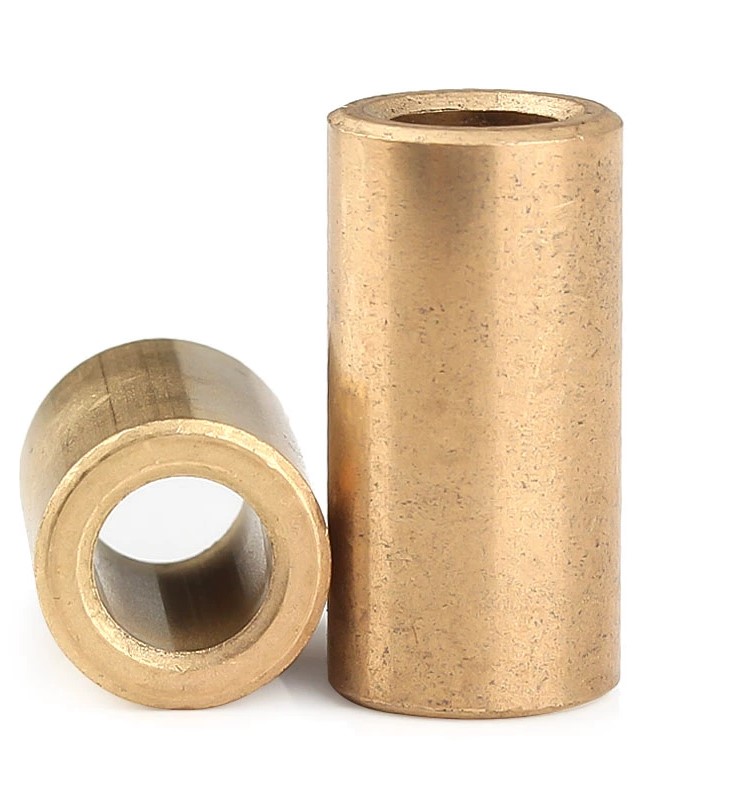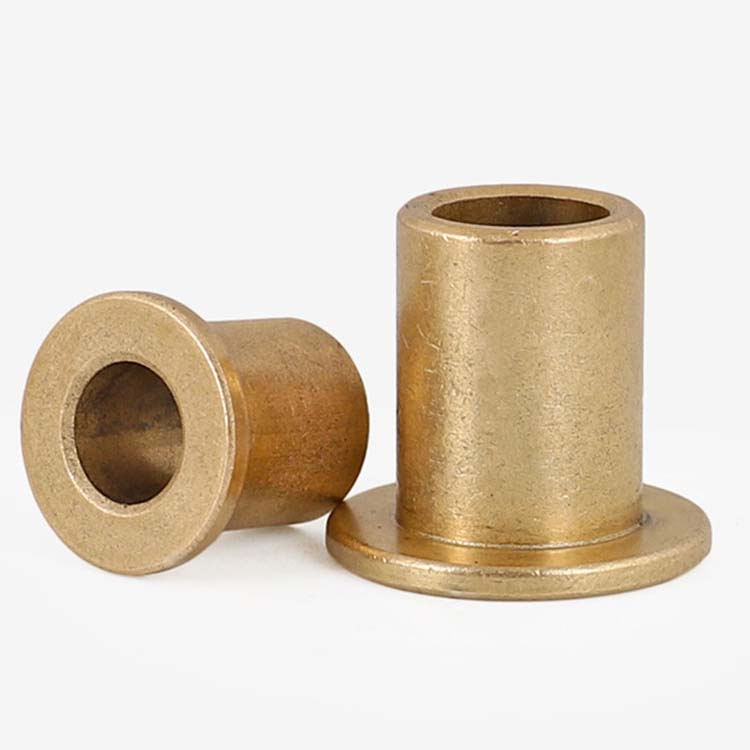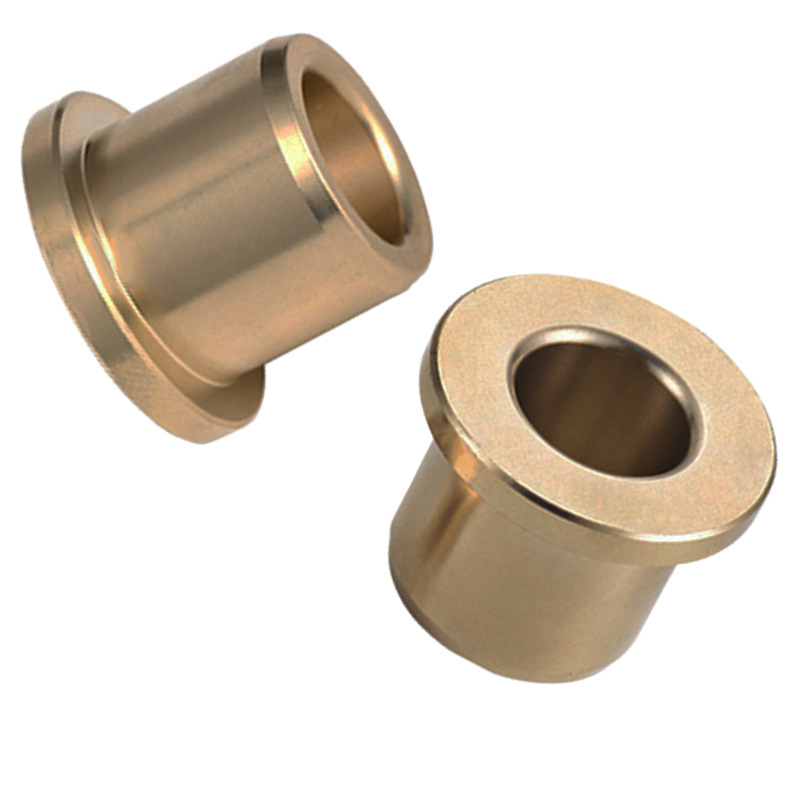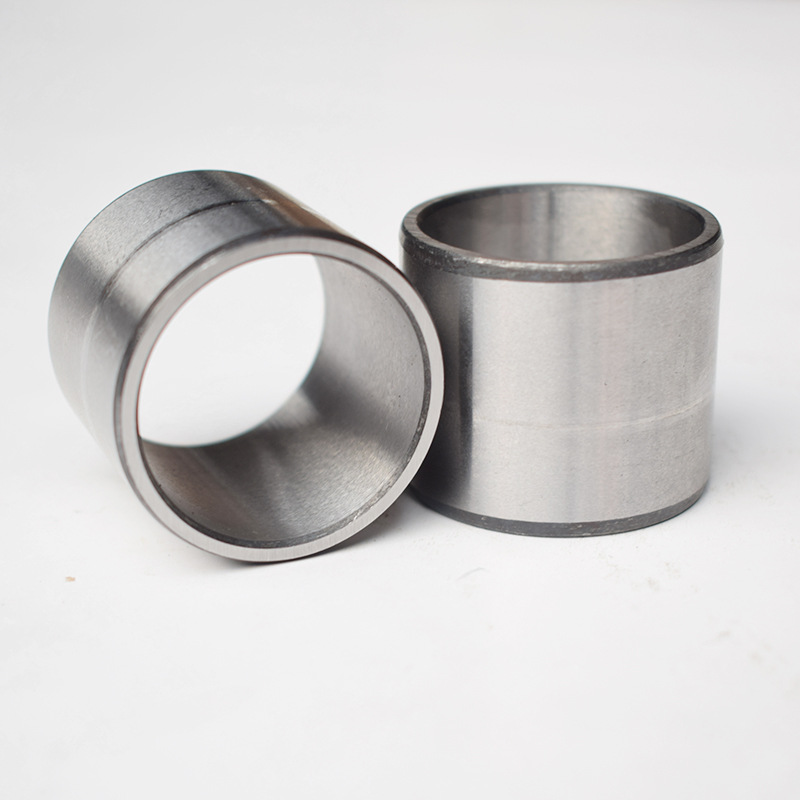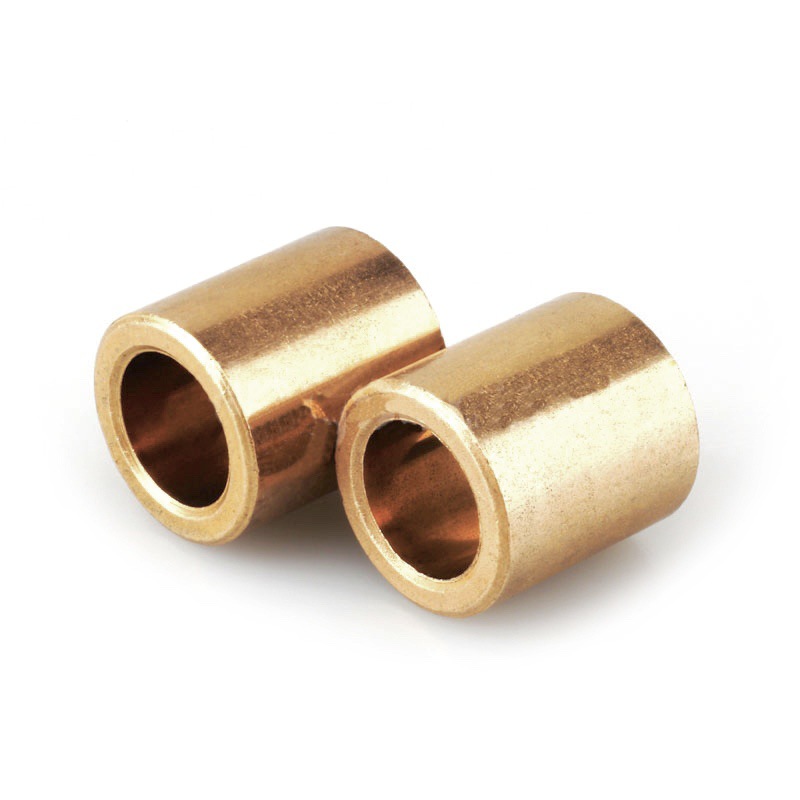Bronze bushings are commonly used in various industrial applications due to their excellent durability, resistance to wear, and ability to operate in harsh environments. The most frequently used bronze bushing materials include alloys that combine copper with elements like tin, zinc, aluminum, and lead. Each alloy has specific properties that make it suitable for particular applications, ranging from high-load capacity and corrosion resistance to excellent machinability and longevity. Some of the most common bronze bushing materials include C93200 (SAE 660), C83600 (SAE 40), C86300 (SAE 430B), C95400, C90500, C86200 (Manganese Bronze), and C95200 (Aluminum Bronze). Each of these alloys brings a balance of strength, hardness, and elongation, making them suitable for use in machinery, automotive parts, and heavy-duty industrial applications.
| Material | Density (g/cm³) | Hardness (HB) | Tensile Strength (psi) | Yield Strength (psi) | Elongation (%) | Composition |
|---|---|---|---|---|---|---|
| C93200 (SAE 660) | 8.8 | >210 | 30,000 | 14,000 | 20 | Cu: 83-86%, Sn: 5-7%, Pb: 5-7% |
| C83600 (SAE 40) | 8.4 | >250 | 30,000 | 14,000 | 20 | Cu: 85%, Sn: 5%, Pb: 5% |
| C86300 (SAE 430B) | 8.6 | >225 | 110,000 | 60,000 | 12 | Cu: 63-65%, Zn: 25-27%, Al: 6% |
| C95400 | 8.5 | >150 | 65,000 | 25,000 | 20 | Cu: 90%, Al: 6%, Fe: 3% |
| C90500 | 8.9 | >70 | 40,000 | 18,000 | 20 | Cu: 88%, Sn: 10%, Zn: 2% |
| C86200 (Manganese Bronze) | ~8.4 | >180 | ~90,000 | ~45,000 | ~18 | Cu: ~64%, Zn: ~26%, Al: ~4% |
| C95200 (Aluminum Bronze) | ~8.4 | >125 | ~65,000 | ~25,000 | ~20 | Cu: ~90%, Al: ~9%, Fe: ~3% |
Related products
-
0.1875″X0.3125″X0.500″ Self-Lubricating Oil Impregnated Bronze Bushing
$2.20 -
0.25″X0.375″X0.25″ Maintenance-Free Oil-Impregnated Bronze Flanged Bushings
$1.96 -
0.50″X0.625″X0.375″ Durable Flange Cast Bronze Bushings for Mechanical Systems
$4.10 -
1 Inch Hardened Steel Bushing
$0.88 -
1-1 4 x 3 4 hardened steel bushing
$0.86 -
1.625 od hardened steel sleeve bushings
$1.74 -
12x18x20mm High-Durability Oil-Impregnated Bronze Sleeve Bushings
$1.66 -
16x20x12mm Oil-Impregnated Sintered Bronze Bush for Long Service Life
$0.77 -
16x22x10mm Precision Engineered Oil-Impregnated Bronze Bearings
$1.35
